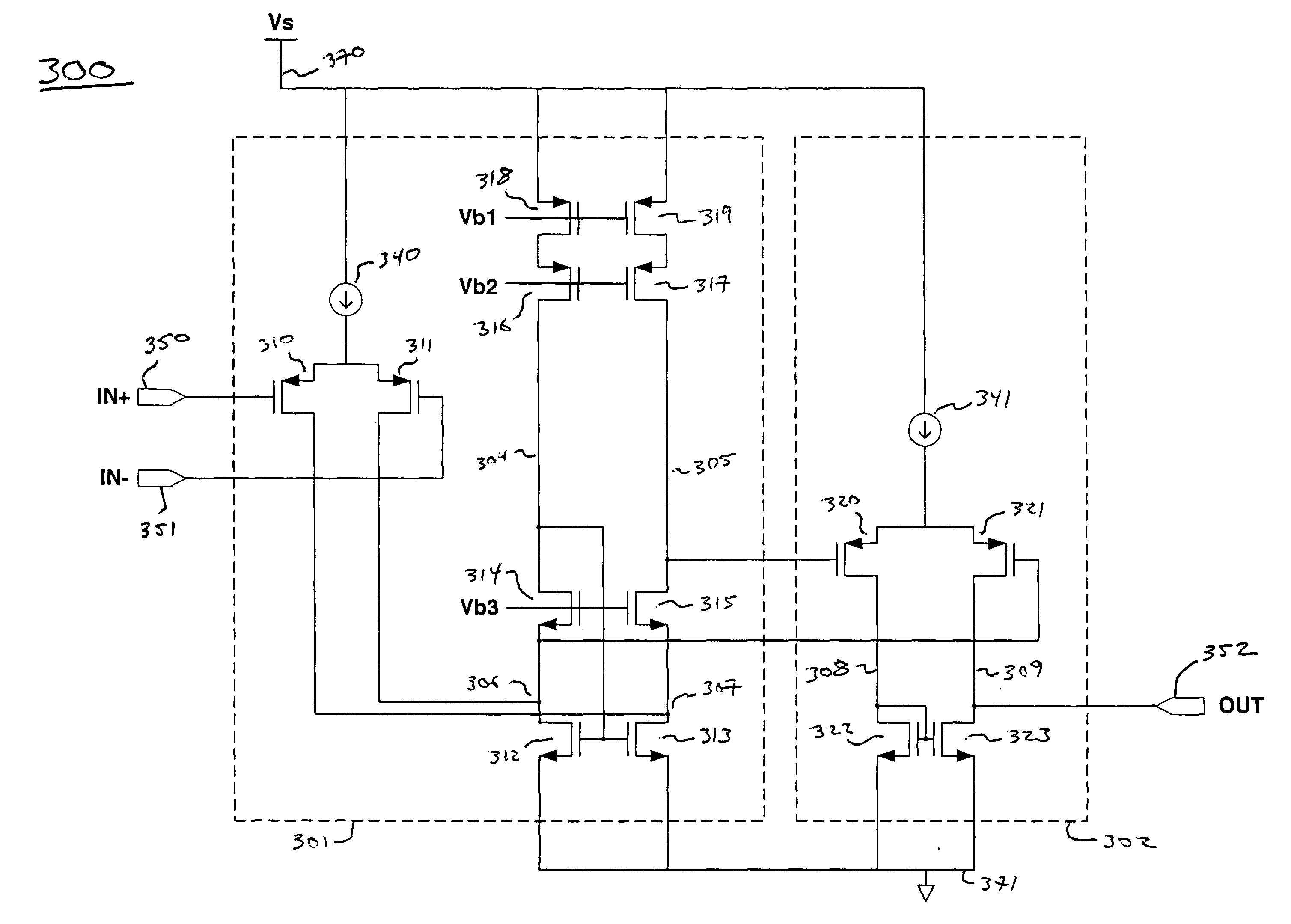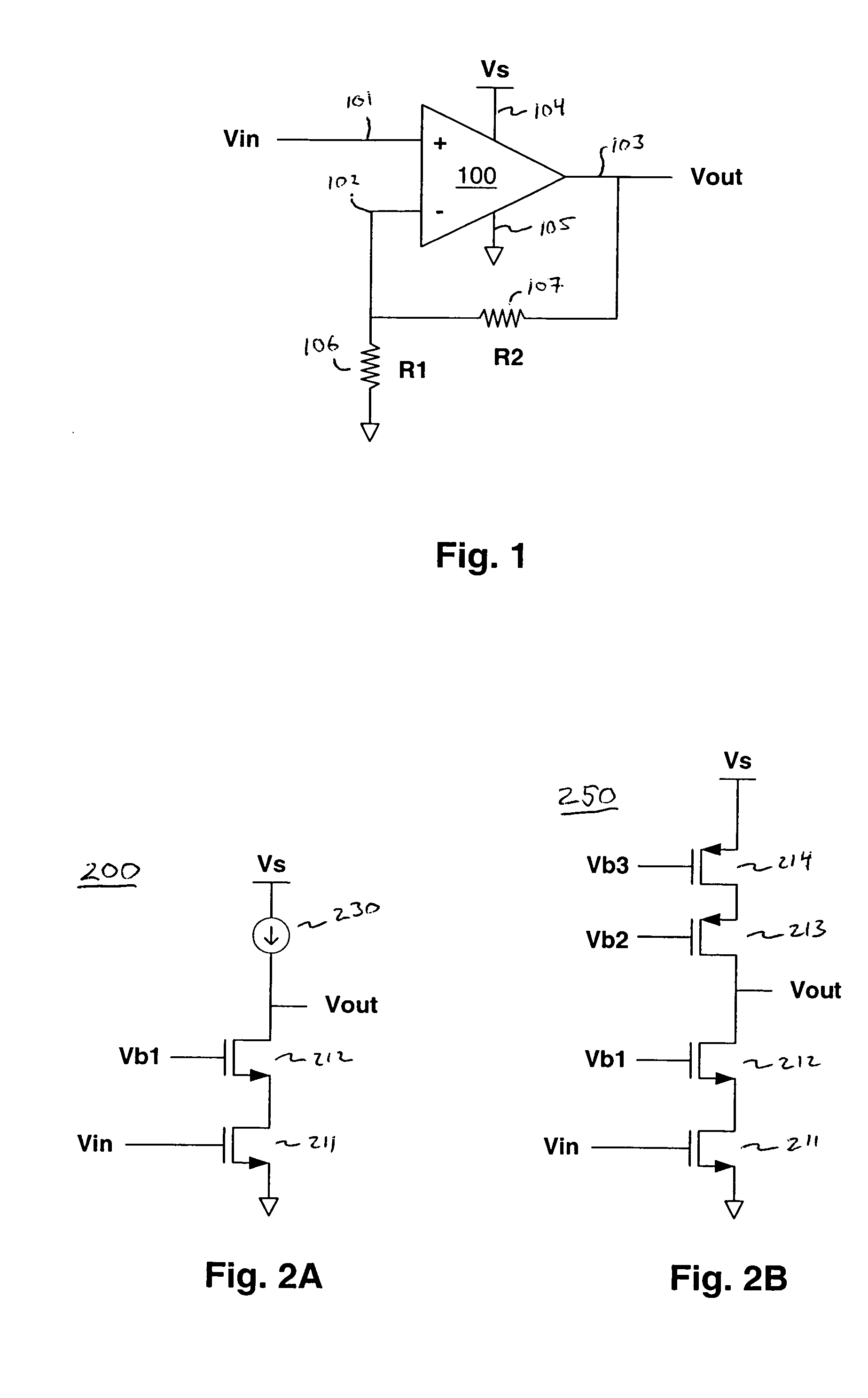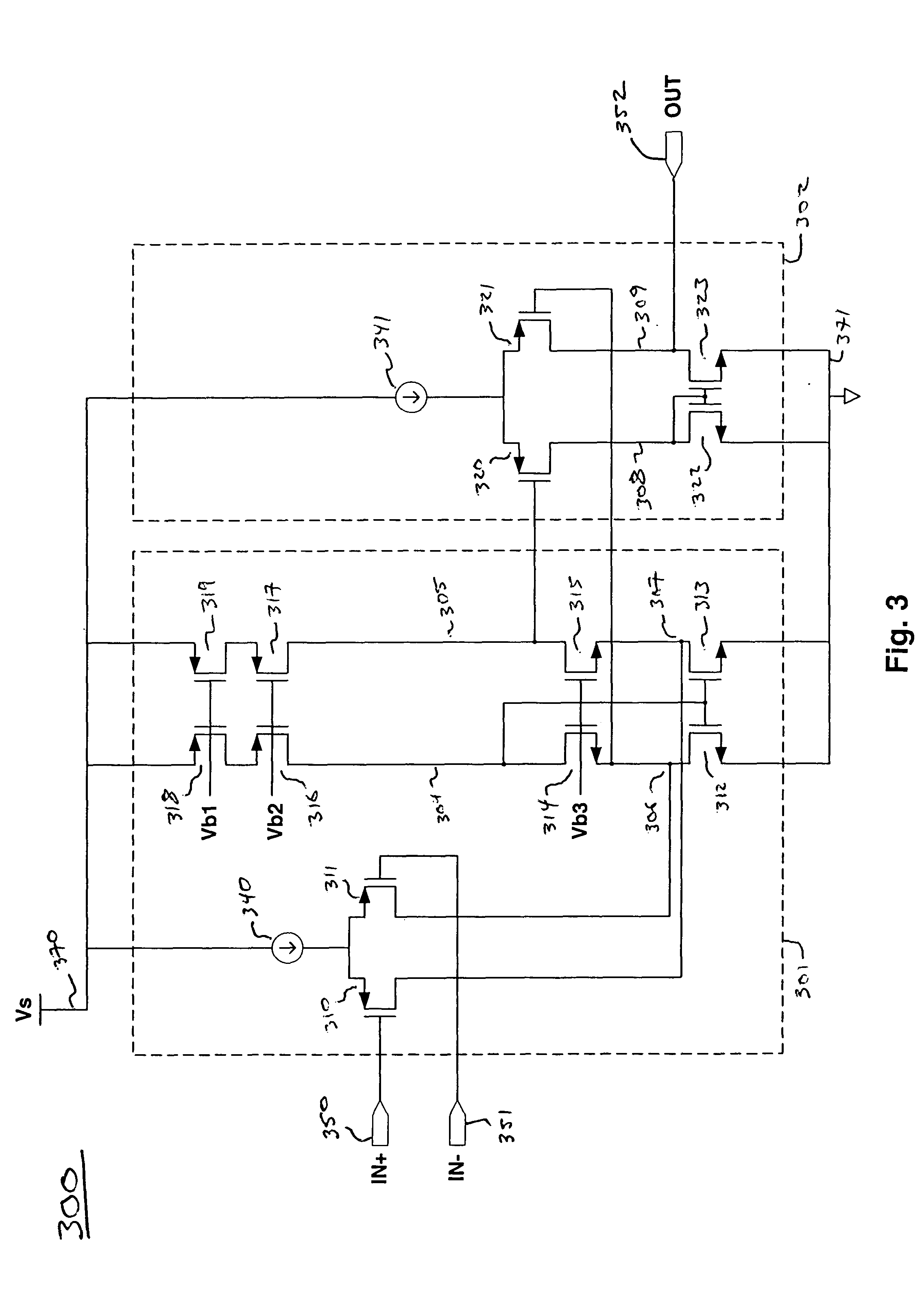Low voltage high gain amplifier circuits
a low-voltage, high-gain technology, applied in the field of amplifier circuits, can solve the problems of reducing the power supply voltage used in electronic systems, affecting the accuracy of amplifiers, and achieving higher gains in cascode circuits at the expense of headroom
- Summary
- Abstract
- Description
- Claims
- Application Information
AI Technical Summary
Benefits of technology
Problems solved by technology
Method used
Image
Examples
Embodiment Construction
FIG. 3 illustrates two stages of an amplifier circuit 300 according to one embodiment of the present invention. Amplifier 300 includes a cascode input stage 301 and differential stage 302 implemented in a MOS technology. The MOS transistors shown include a gate control terminal, source terminal, and drain terminal. When the circuit is operating, supply voltages are applied to power supply terminals 370 and 371. Cascode input stage 301 includes input PMOS transistors 310 and 311. The gates of PMOS transistors 310 and 311 are coupled to input terminals 350“IN+”) and 351“IN−”), respectively. The sources of transistors 310 and 311 are both connected to a current source 340. Accordingly, when a differential voltage is applied across the input terminals, a differential current will be generated in the drain terminals of the PMOS transistors.
The drain of transistor 310 is coupled to cascode node 307 formed between cascaded transistor 313 and cascode transistor 315, and the drain of transi...
PUM
 Login to View More
Login to View More Abstract
Description
Claims
Application Information
 Login to View More
Login to View More - R&D
- Intellectual Property
- Life Sciences
- Materials
- Tech Scout
- Unparalleled Data Quality
- Higher Quality Content
- 60% Fewer Hallucinations
Browse by: Latest US Patents, China's latest patents, Technical Efficacy Thesaurus, Application Domain, Technology Topic, Popular Technical Reports.
© 2025 PatSnap. All rights reserved.Legal|Privacy policy|Modern Slavery Act Transparency Statement|Sitemap|About US| Contact US: help@patsnap.com



